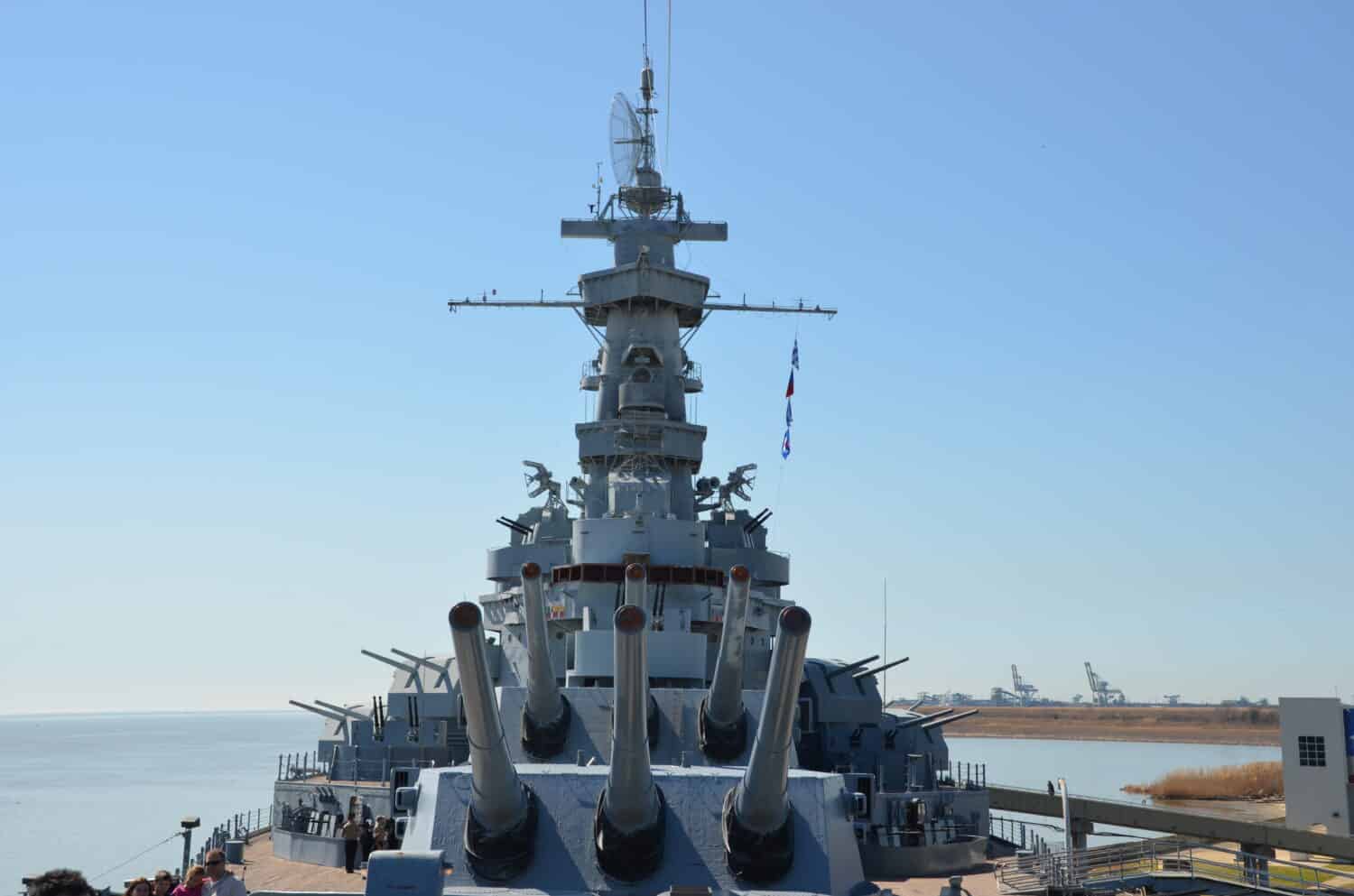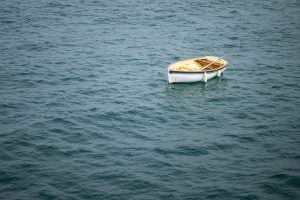The United States Navy maintains an edge when it comes to sheer numerical superiority over most nations. When you have a proud naval tradition like the United States, that means fielding the most and the best around. Today, we’re looking at the most numerous vessels in Navy service.
How Large Is the US Navy?
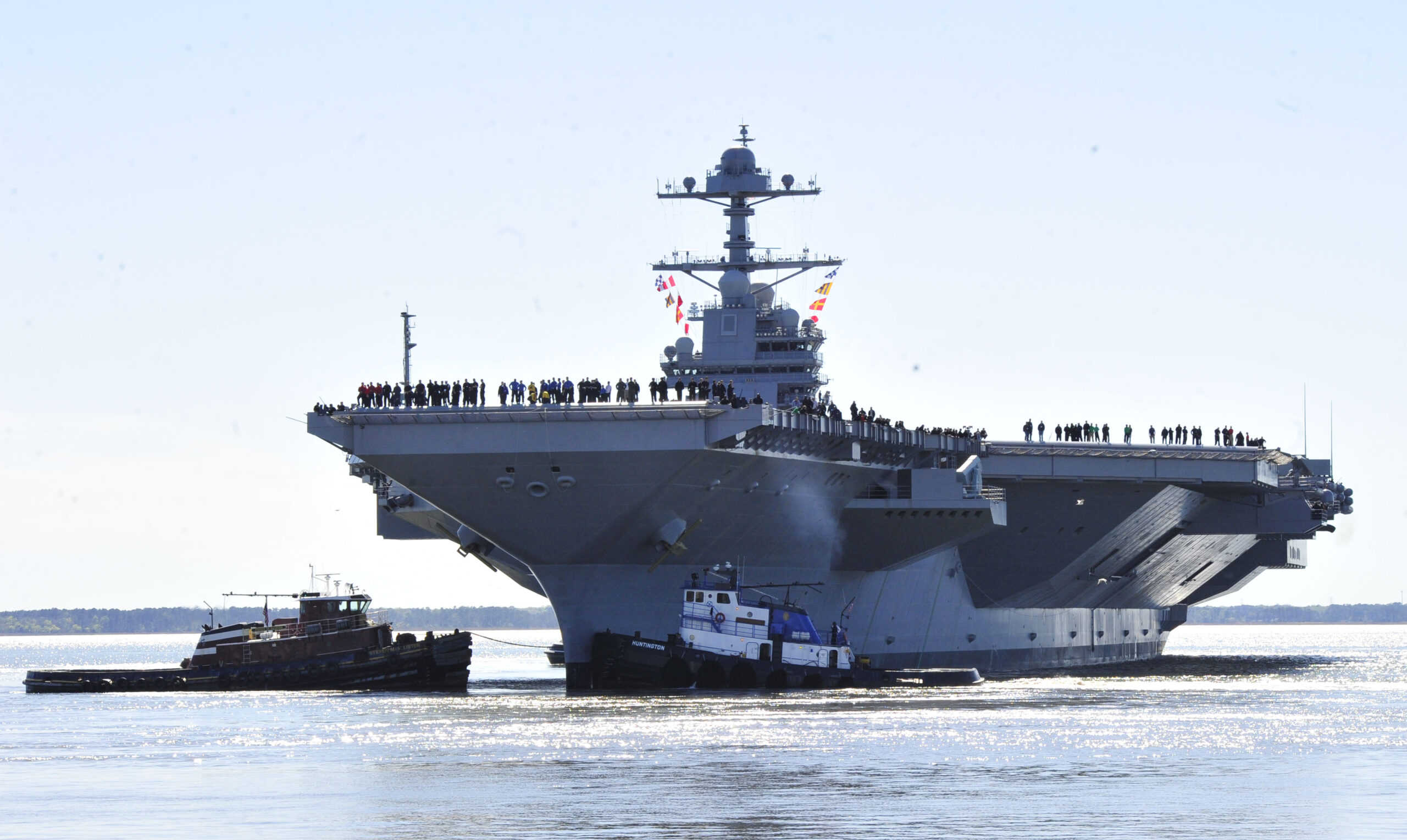
According to the US Navy website, 280 ships, including surface and subsurface vessels like submarines, are currently in commission. This number includes the largest fleet of aircraft carriers in the world, with 11 total. This number is more than China, North Korea, and Russia combined, so the US Navy is undoubtedly a powerful worldwide presence.
How Many Sailors Are in the US Navy?
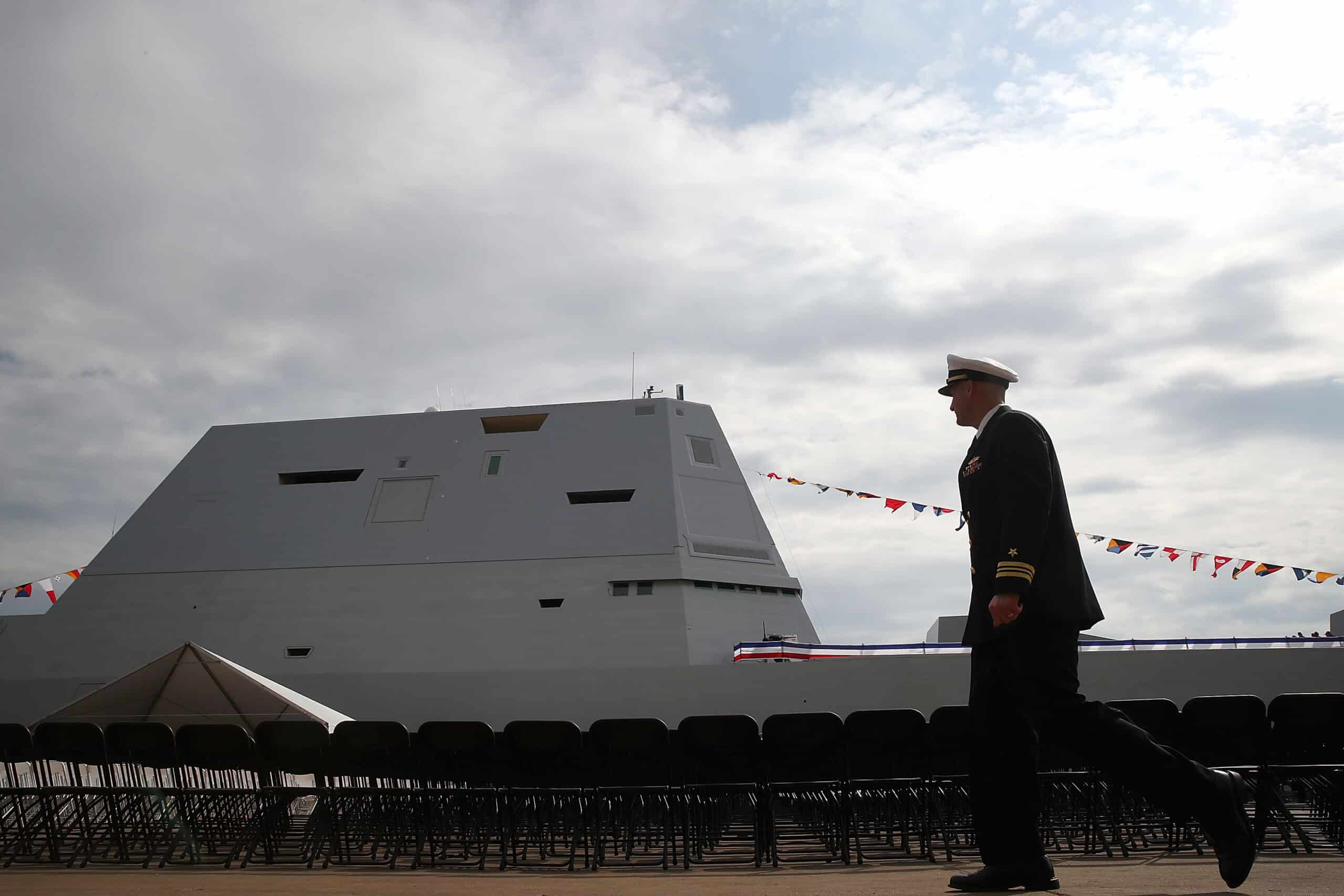
Of course, the Navy’s size is not just due to the number of ships but also to the 328,363 sailors. This makes the US Navy the third largest US military service branch, and you can also add another 101,583 Navy members of the Ready Reserve. This combination of firepower, sailors, and the most elite training in the world makes the US Navy a staple presence of the world’s lone superpower.
Is the US Navy Solely a Maritime Power?
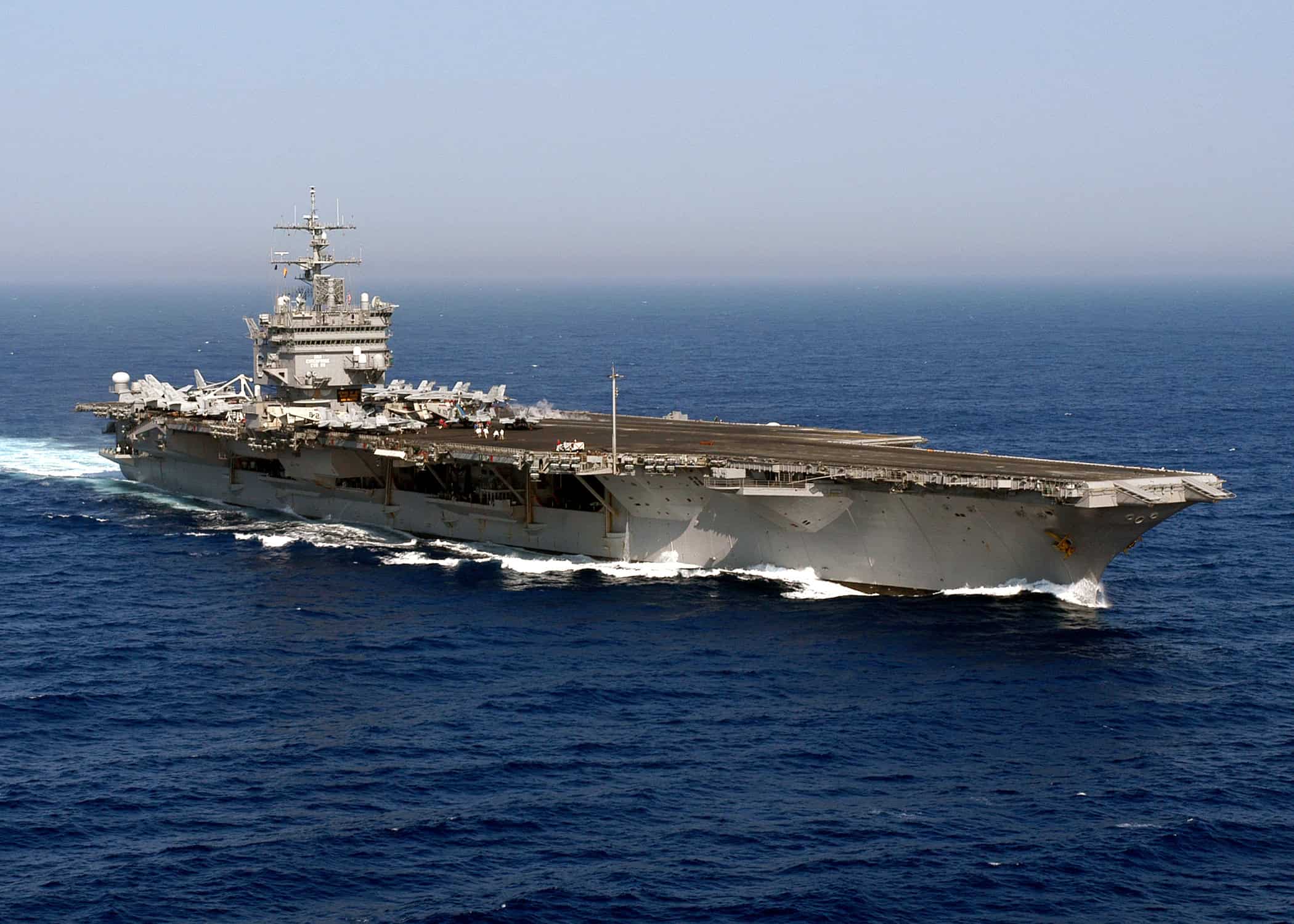
While the bulk of the Navy’s efforts focus on the seas, they do maintain a land-based contingency like the Navy SEALs. Additionally, the US Navy makes sure that all sailors are well-versed in the use of small arms like any other United States military branch.
19. Ford-class aircraft carrier
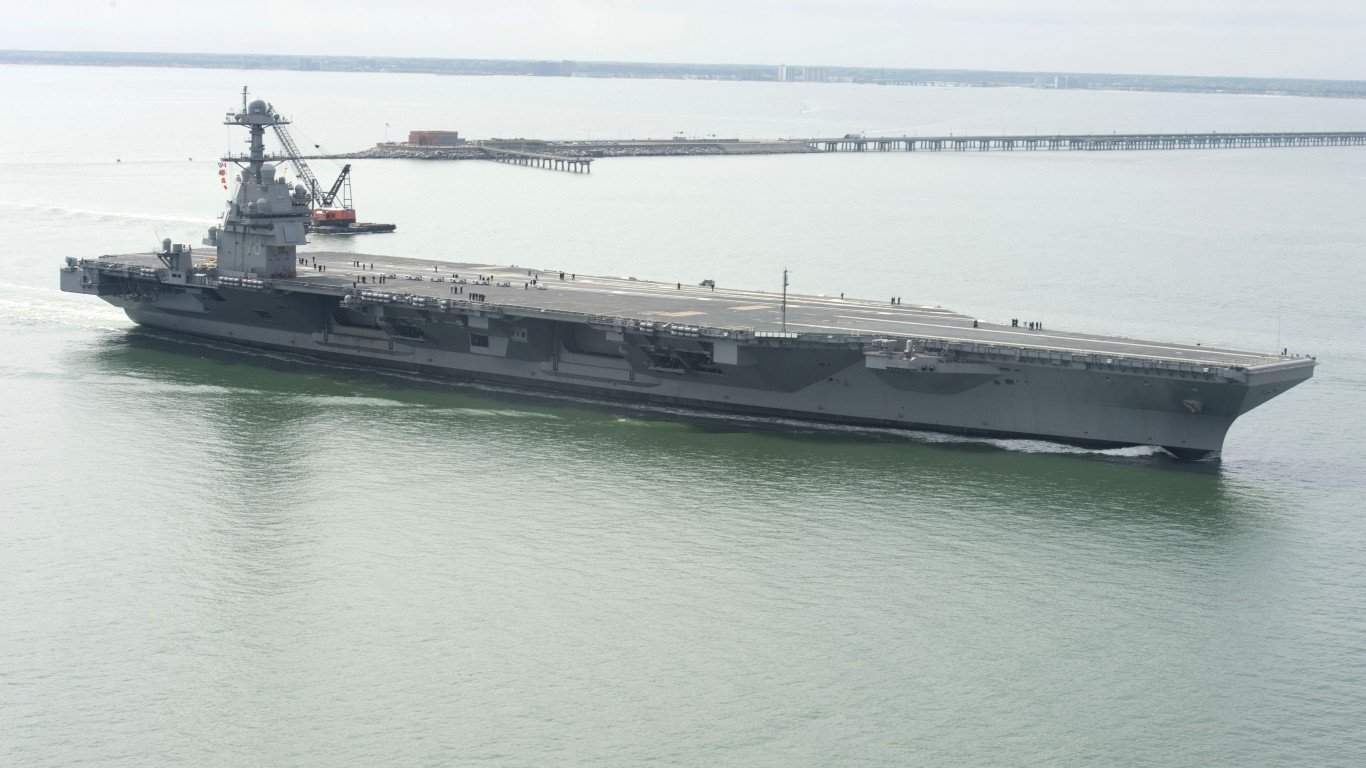
- Number of boats: 1
Building on the innovations of the Nimitz class, which was introduced more than half a century ago, the Ford class of aircraft carriers has been dubbed the next-generation “supercarrier.” The flagship of this class, the Gerald R. Ford, can house at least 75 aircraft of various makes and models.
This number also includes helicopters and unmanned aerial vehicles. Although this ship is not as well armed as many others within the U.S. Navy, its aircraft makes up for that. More aircraft carriers, namely the John F. Kennedy and Enterprise, are in production.
18. America-class amphibious assault ship
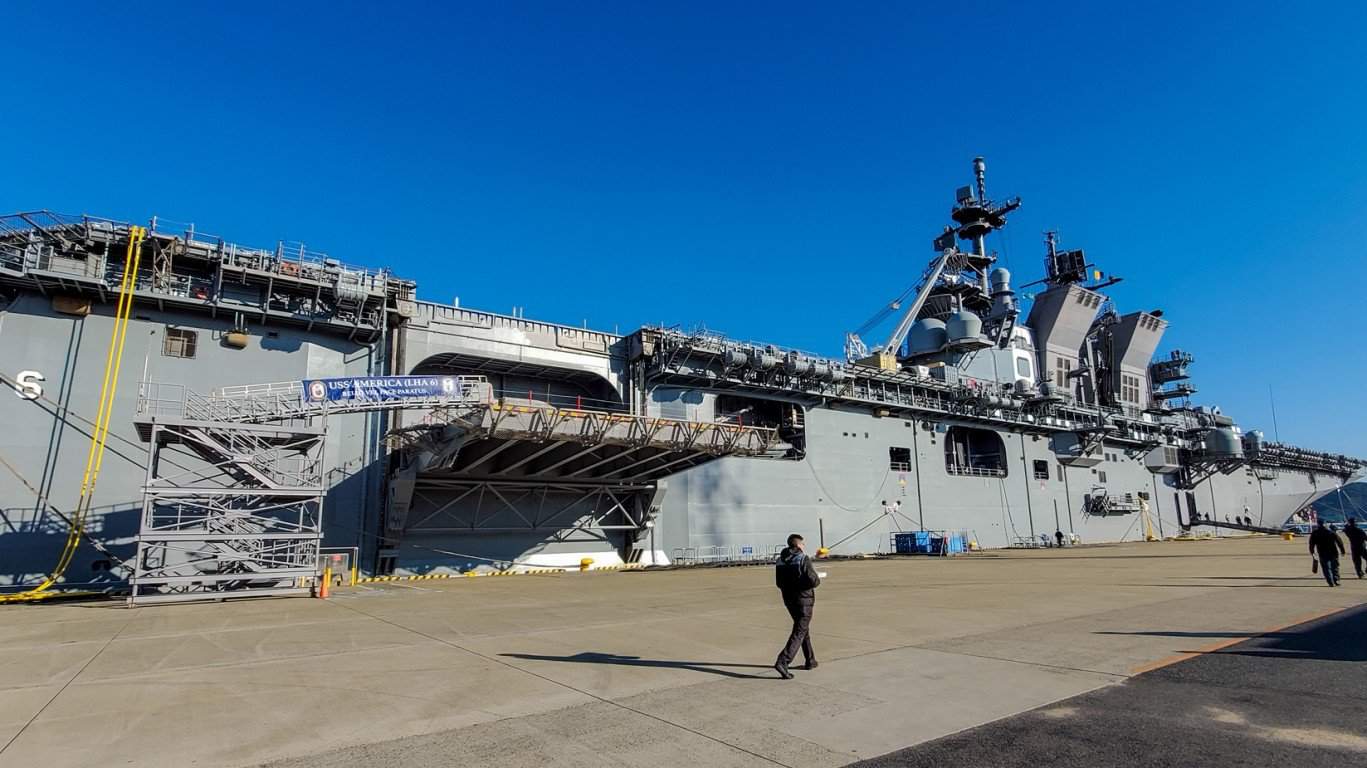
- Number of boats: 2 (tied)
One of two ships in the America class of amphibious assault ships is the America (LHA-6). This ship has a crew of just over 1,000 and can carry a contingent of nearly 1,700 marines. The America class has a flight deck mainly supporting Vertical Take-Off and Landing aircraft such as the AV-8B Harrier II or helicopters and tilt-rotor transports like the MV-22B Osprey. These ships are primarily meant to support marine operations where needed.
17. Blue Ridge-class command ship
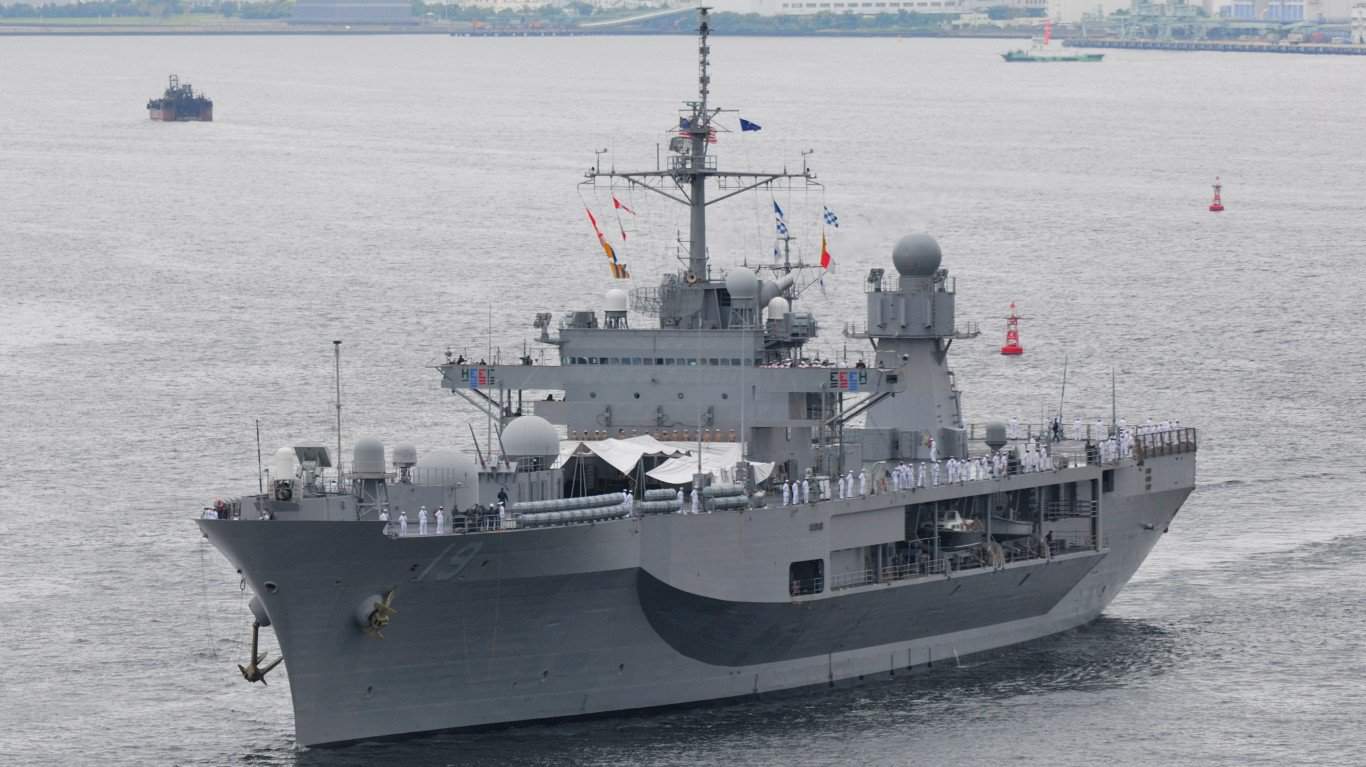
- Number of boats: 2 (tied)
The USS Blue Ridge (LCC-19) was the first ship of its class to enter the U.S. Naval Service in 1970. It serves as a command ship, supporting fleet actions through command, control, communications, computers, and intelligence (C4I).
This boat houses an 842-person crew but can hold nearly 1,500 command staff and personnel. The USS Blue Ridge was present during the Vietnam War but more recently aided Japan following its 2011 Tohoku earthquake and tsunami.
16. Zumwalt-class guided missile destroyer
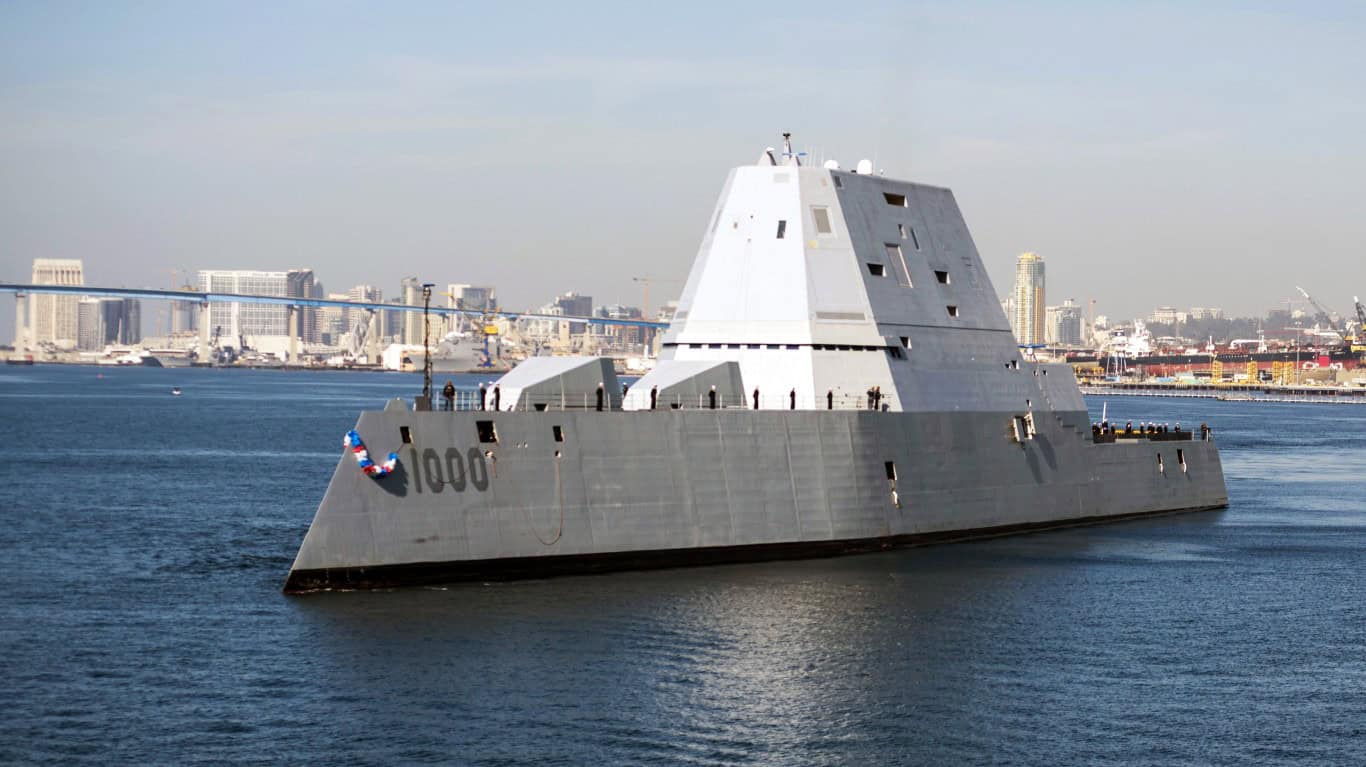
- Number of boats: 2 (tied)
The Zumwalt class is a fairly recent entry to the U.S. Naval Service, beginning in 2016. These ships have a sleek new design that distinguishes them from other classes of destroyers. Zumwalt-class ships also tend to be smaller, with only a displacement of 14,564 tons and a crew size of 140.
This is compared to the Gerald R. Ford aircraft carrier, which has a displacement of 112,000 tons and a crew of 4,660. However, this class has been halted due to cost concerns, and production has been stopped. There will likely be no more Zumwalt-class ships in the future.
15. Seawolf-class submarine
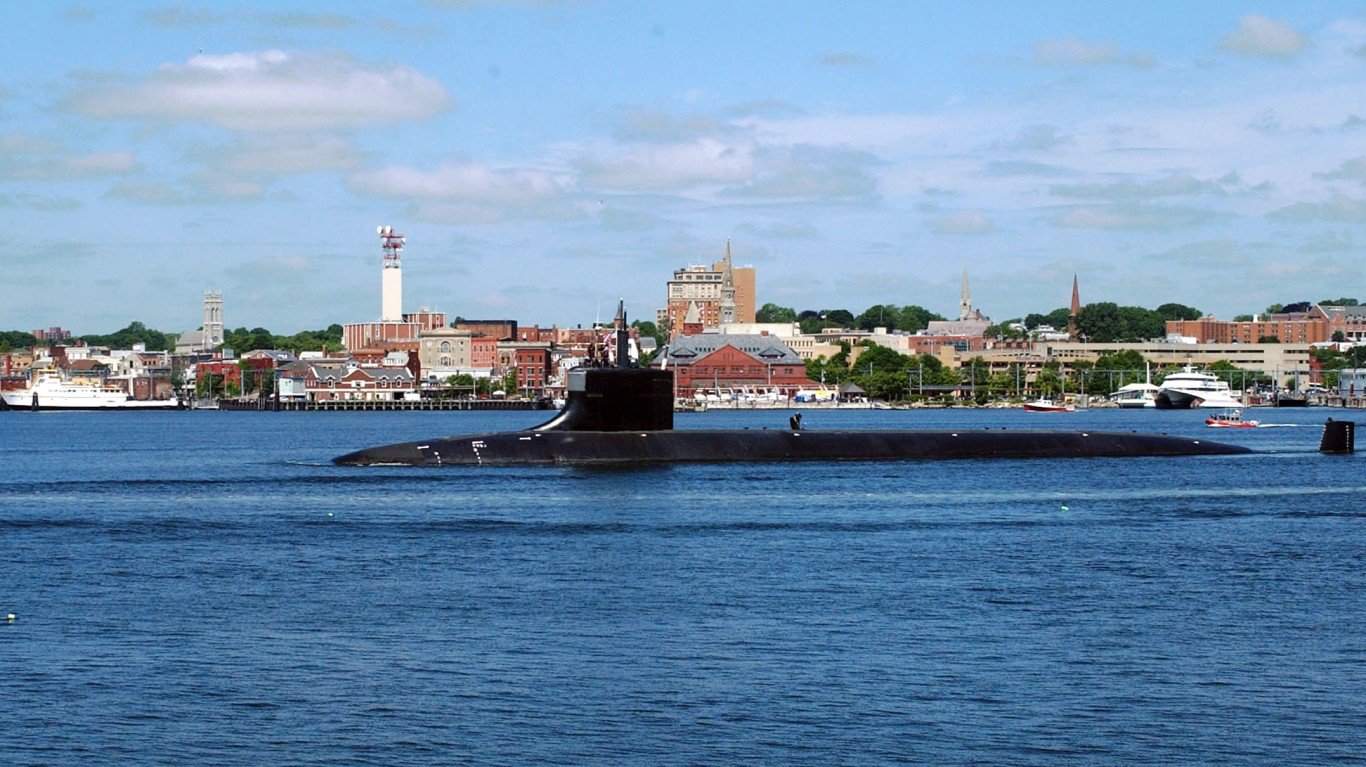
- Number of boats: 3
The Seawolf-class of attack submarines entered the Navy in 1997. Nearly 30 orders were expected for this class, but only three were produced. These ships were expected to replace the Los Angeles class of submarines from the Cold War era. Still, the Virginia class was ultimately designated as the attack submarine of choice for the U.S. Navy.
14. Harpers Ferry-class dock landing ship
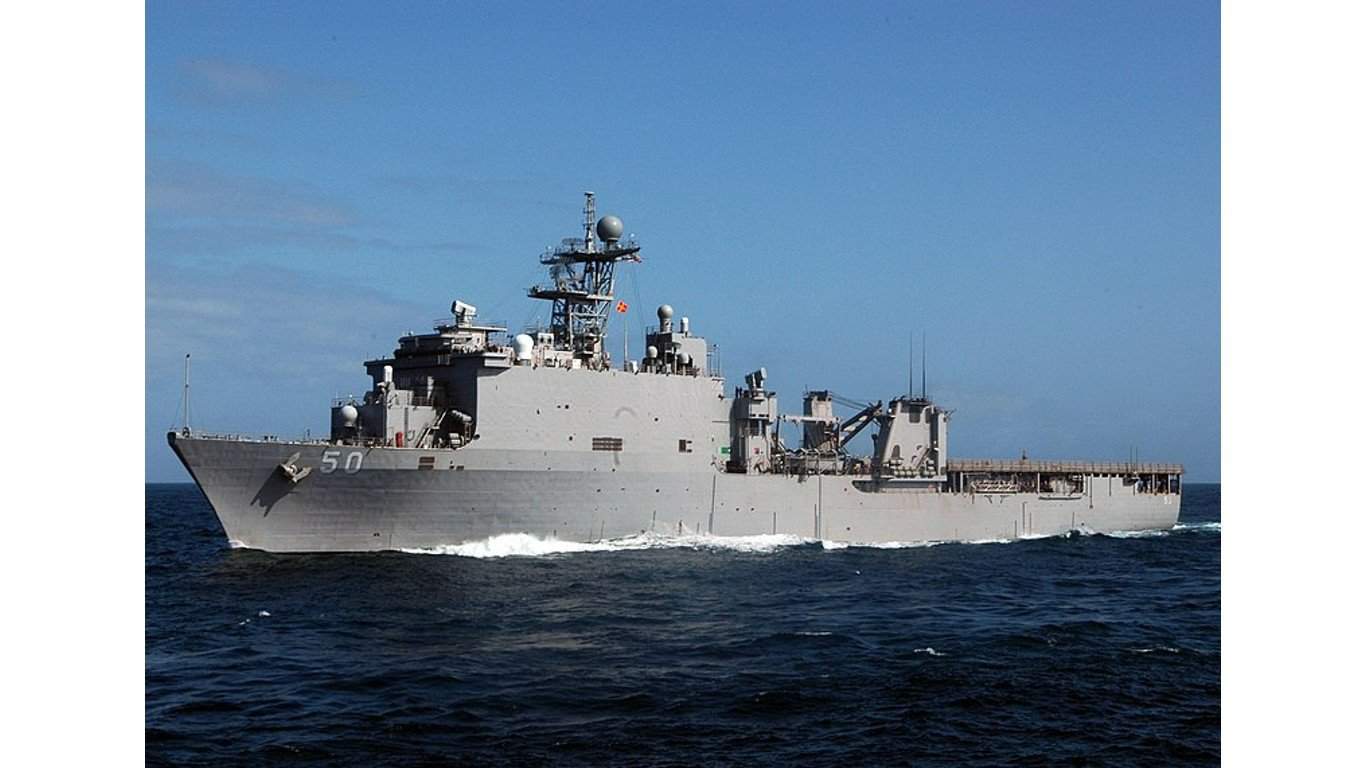
- Number of boats: 4
Entering service in the late 1990s, the Harpers Ferry class of ships generally acts as a command-and-control center for the forces they deploy. This class of dock landing ships can deliver landing craft and other amphibious assault vehicles, as well as Marines. These ships were originally built in New Orleans by Avondale Shipyard, which ceased shipbuilding operations for the U.S. Navy in 2014.
13. Wasp-class amphibious assault ship
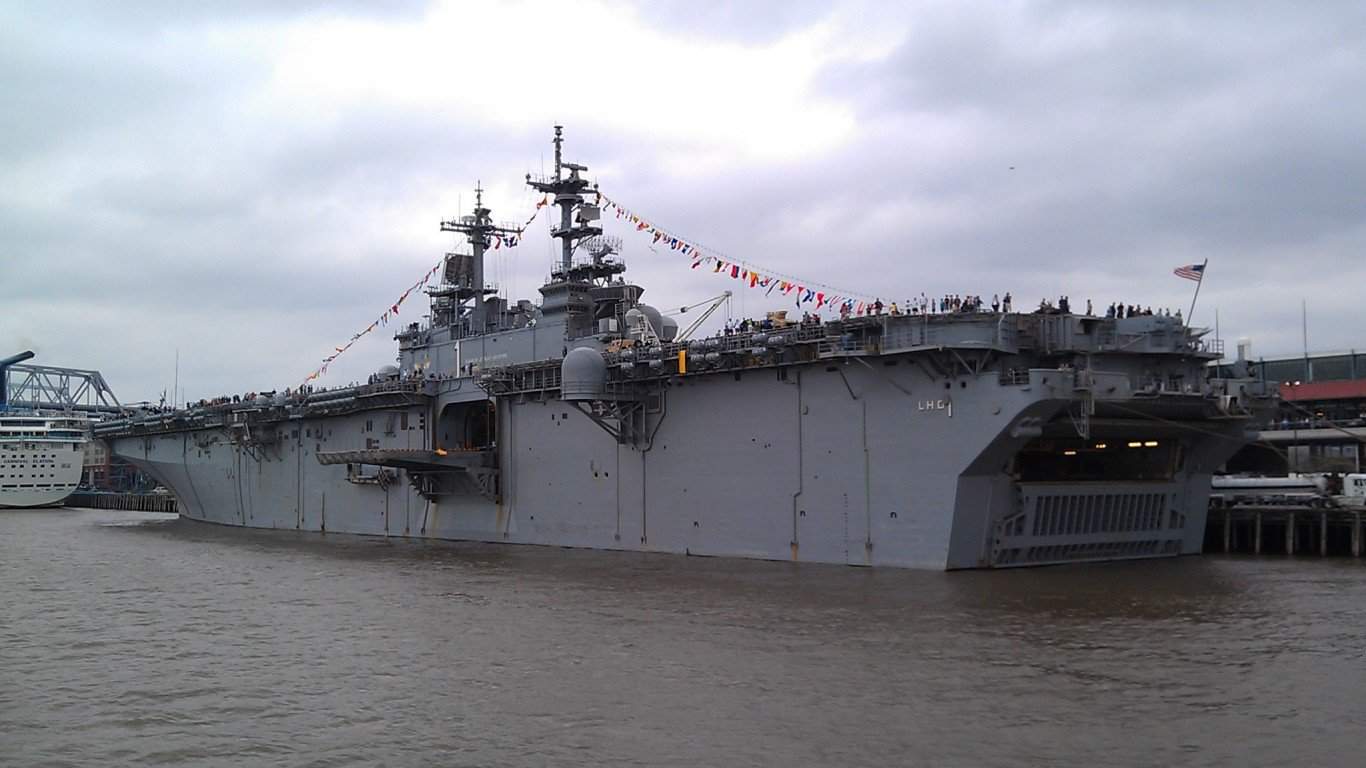
- Number of boats: 7 (tied)
The hull number with this class is LHD, which stands for “landing helicopter dock.” The Wasp class is primarily used for housing aircraft, landcraft, and smaller watercraft. Outside of this, these ships are outfitted with sophisticated communication systems to run command-and-control for land and sea missions. Each boat in this class cost roughly $822 million to procure.
12. Whidbey Island-class dock landing ship
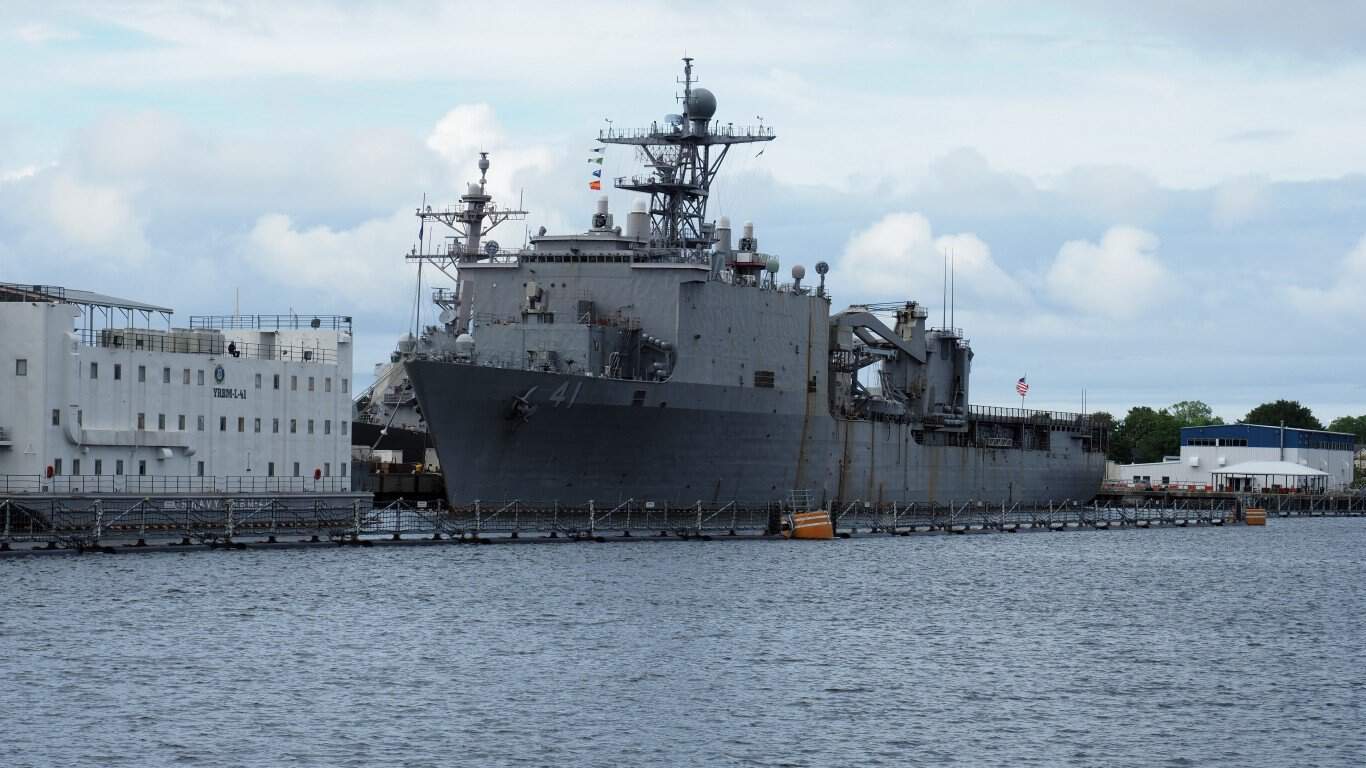
- Number of boats: 7 (tied)
The Whidbey Island class of dock landing ships acts as aircraft and troop carriers. Not nearly as large as the Nimitz or Ford classes, the Whidbey Island-class measures roughly half the size of those carriers. It can handle a crew of 200 to 300, with a complement of up to 500 marines.
11. Avenger-class mine countermeasures ship
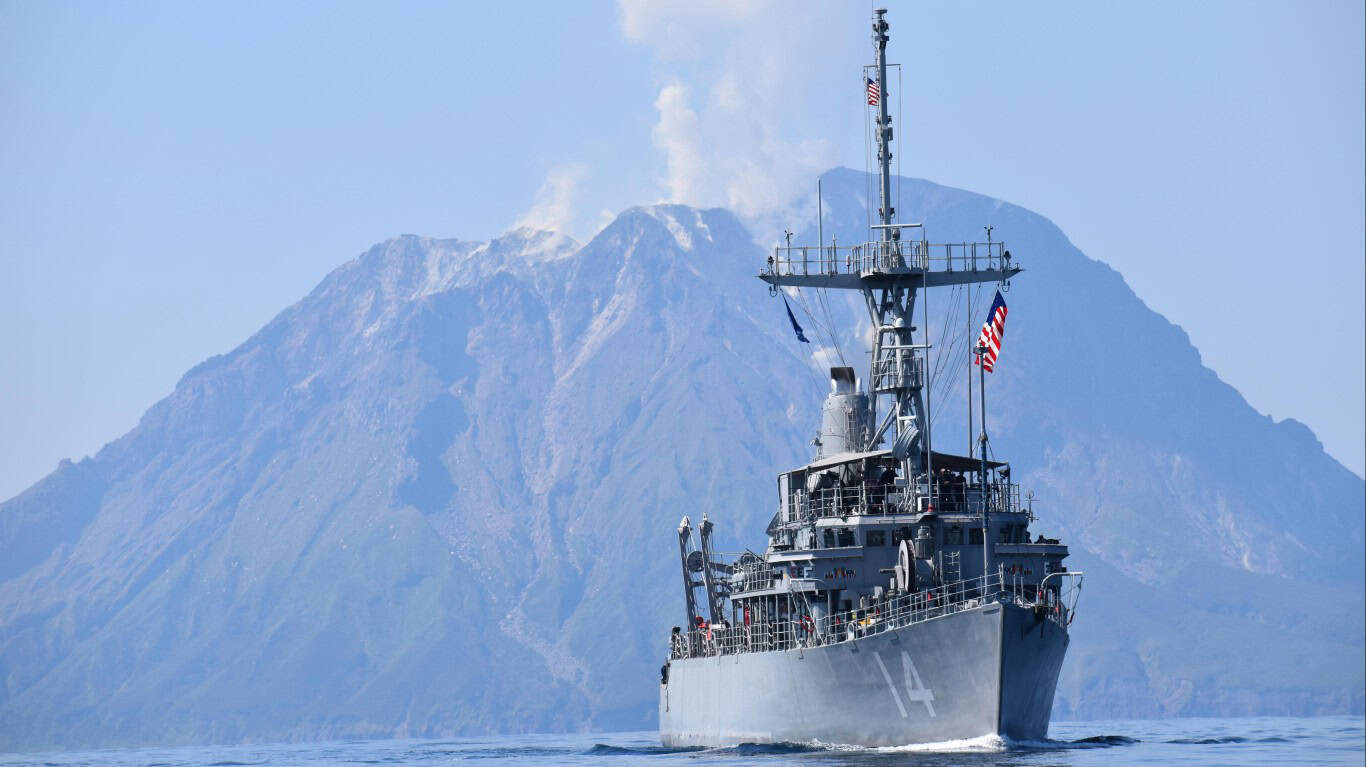
- Number of boats: 8
The Avenger-class mine countermeasures ship is one of the smallest ships listed here. With a crew of less than 100, this ship is less than a quarter of the size of the Navy’s largest ship, the Gerald R. Ford.
The Avenger class’s primary sensor systems are the AN/SSN-2 Precise Integrated Navigation System, AN/SQQ-32 Mine Hunting Sonar System, AN/SPS-55 Surface Radar System, and AN/WSN-2 Gyro Compass.
10. Freedom-class littoral combat ship
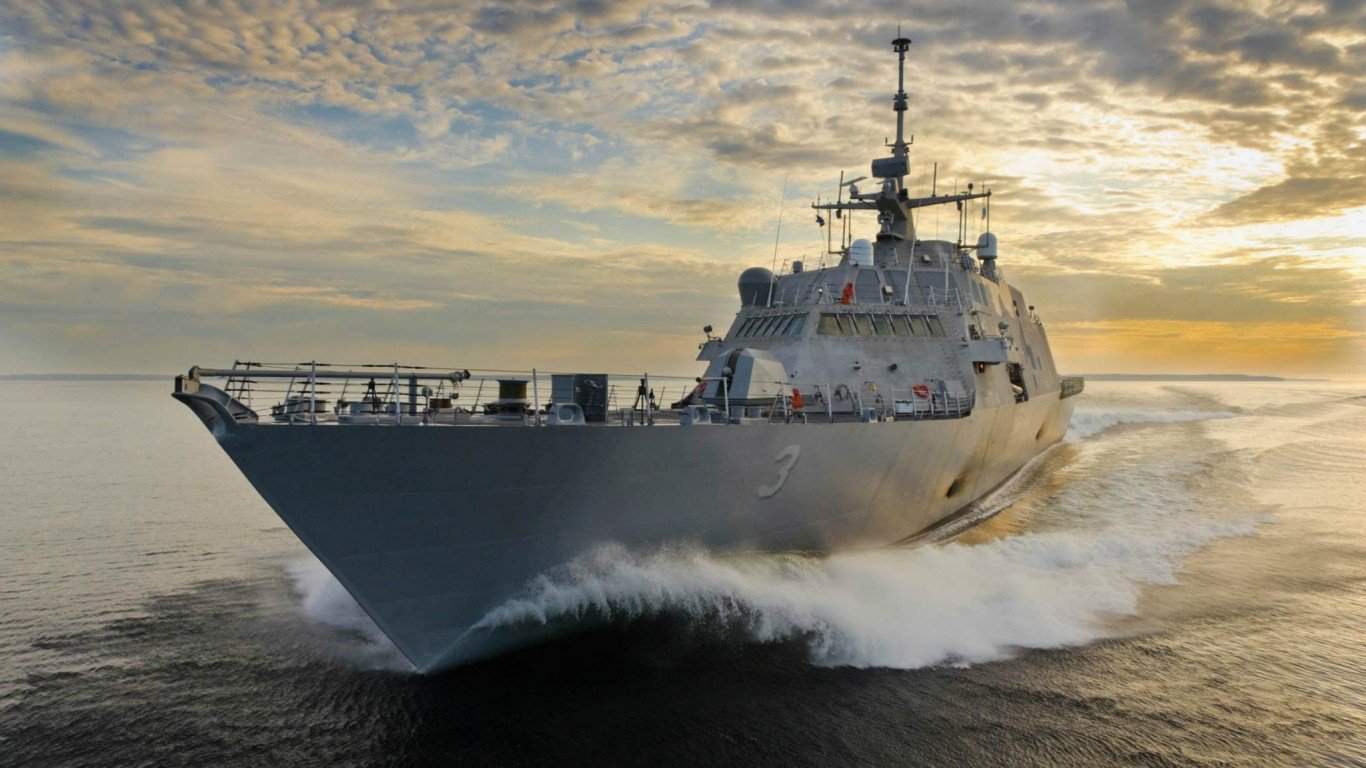
- Number of boats: 9
The Freedom class is one of the most recent ships to join the U.S. Navy, having entered service in 2008. It is a coastal combat ship, a fast, mission-focused platform intended for near-shore or relatively shallow environments.
These ships have a total displacement of roughly 3,000 tons and a draught of about 13 feet, which enable them to navigate these environments.
9. Cyclone-class patrol ship
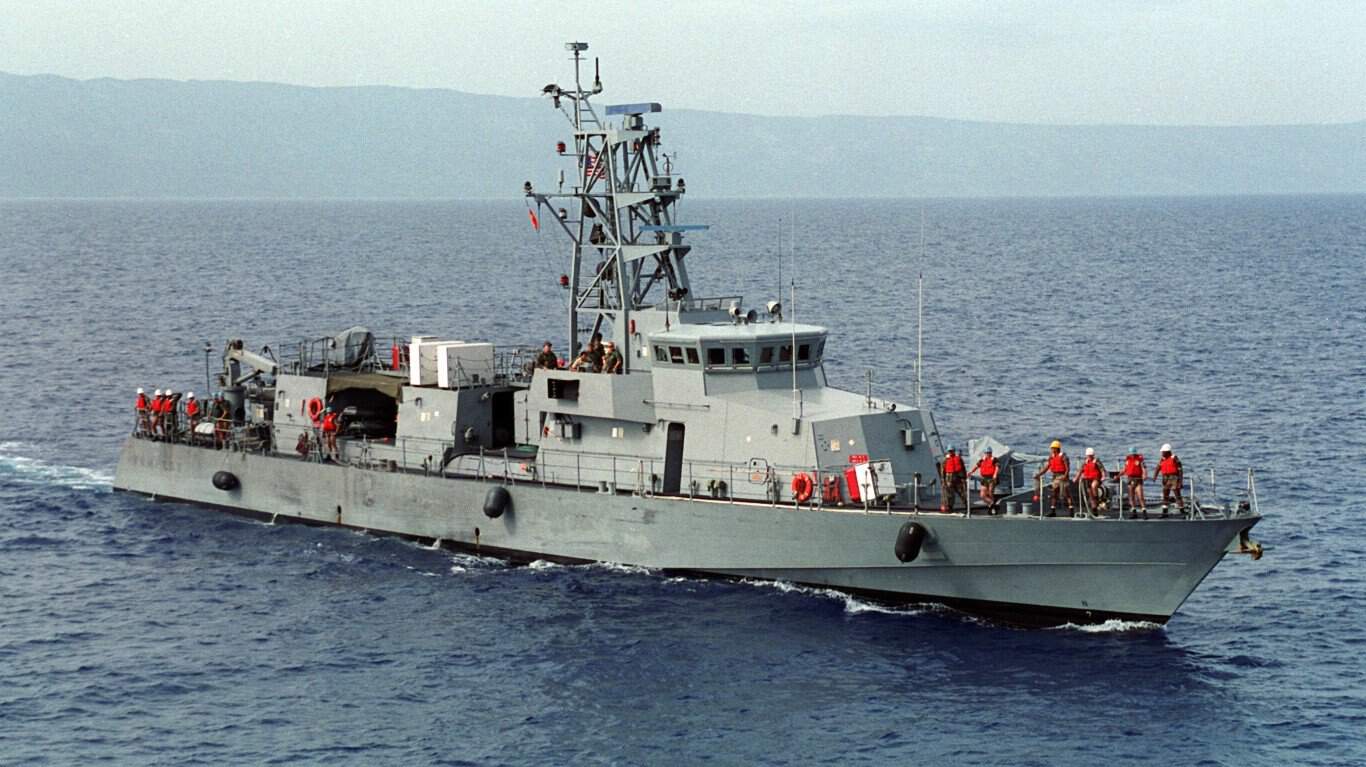
- Number of boats: 10 (tied)
The Cyclone-class patrol ships are the smallest series of warships in the U.S. Navy, measuring about 175 feet long and crewed by less than 50. Accordingly, its armament reflects its size. Cyclone-class ships are outfitted with Stinger missiles, automatic grenade launchers, and machine guns ranging from 12.7mm to 7.62mm calibers.
8. Nimitz-class aircraft carrier
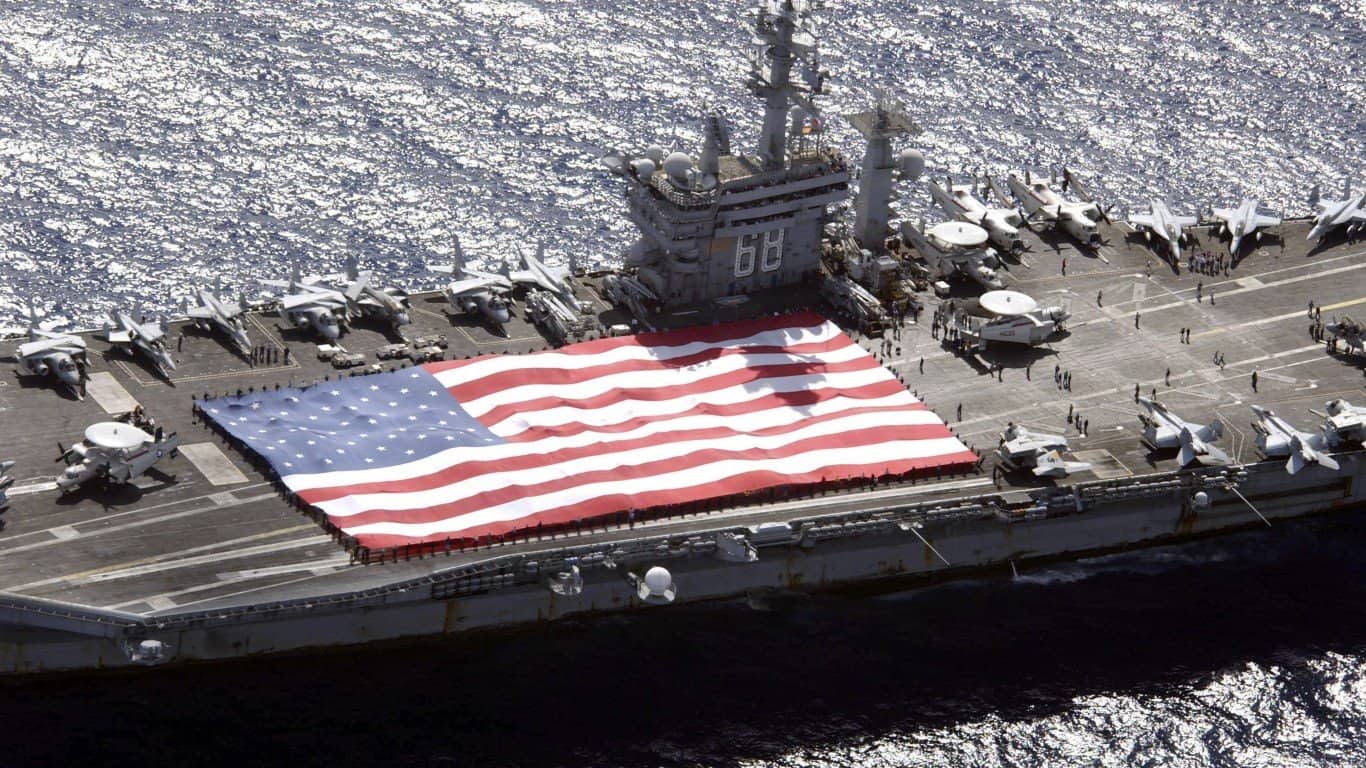
- Number of boats: 10 (tied)
The Nimitz-class aircraft carriers emerged in the 1970s, coming from a strong naval tradition. Aircraft carriers turned the tide of World War II in the Pacific Theater and have been a staple of the U.S. Navy. Building on WWII technology, the Nimitz class allows for better radar, more aircraft, and longevity.
These carriers can carry about 90 aircraft, namely fighter jets and some rotary aircraft like helicopters or Ospreys. The Nimitz class has since been discontinued, and the U.S. Navy is moving forward with the Ford-class aircraft carriers.
7. San Antonio-class amphibious transport dock
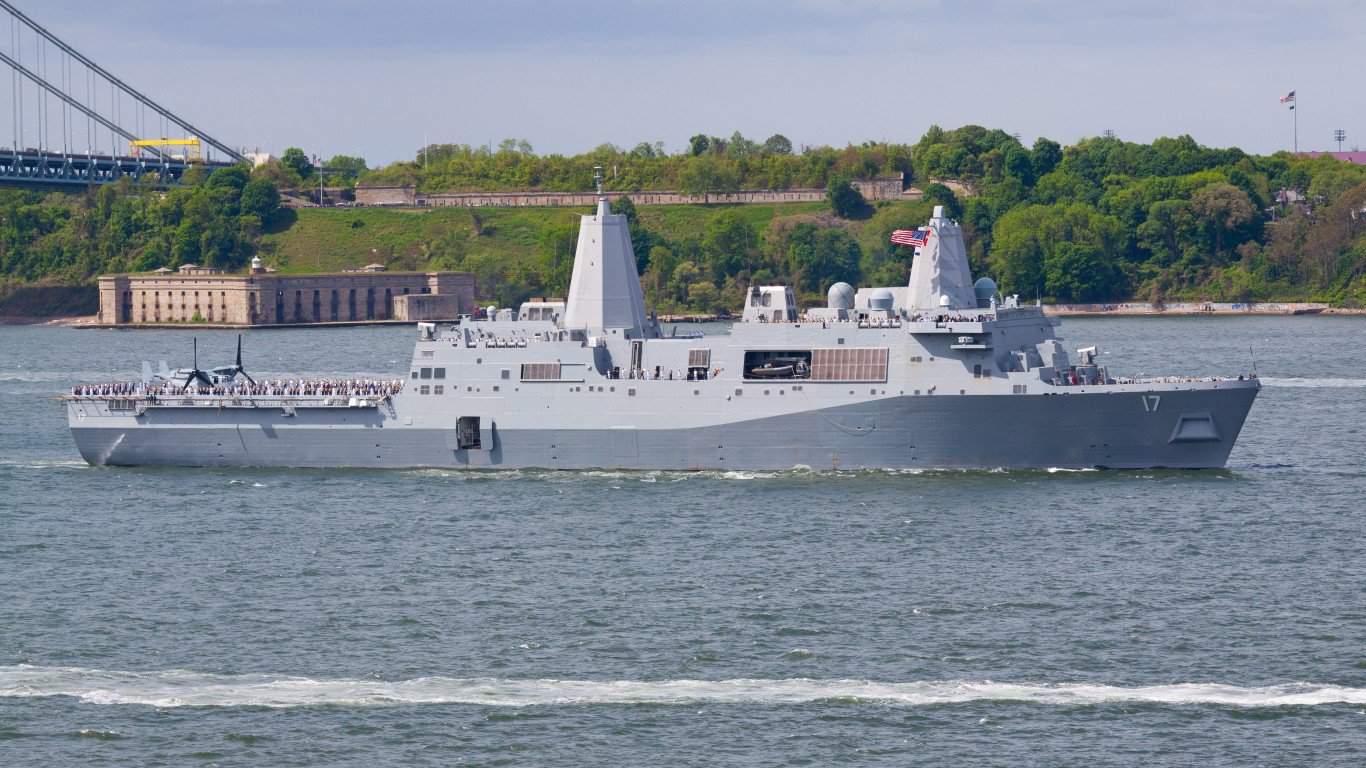
- Number of boats: 11
The San Antonio class’s LPD hull designation stands for “landing paddock,” and as such, it houses troops, aircraft, and some smaller watercraft. These ships have a crew of just under 400 naval personnel and can carry an additional 700 Marines. They first entered service in 2006.
6. Independence-class corvette
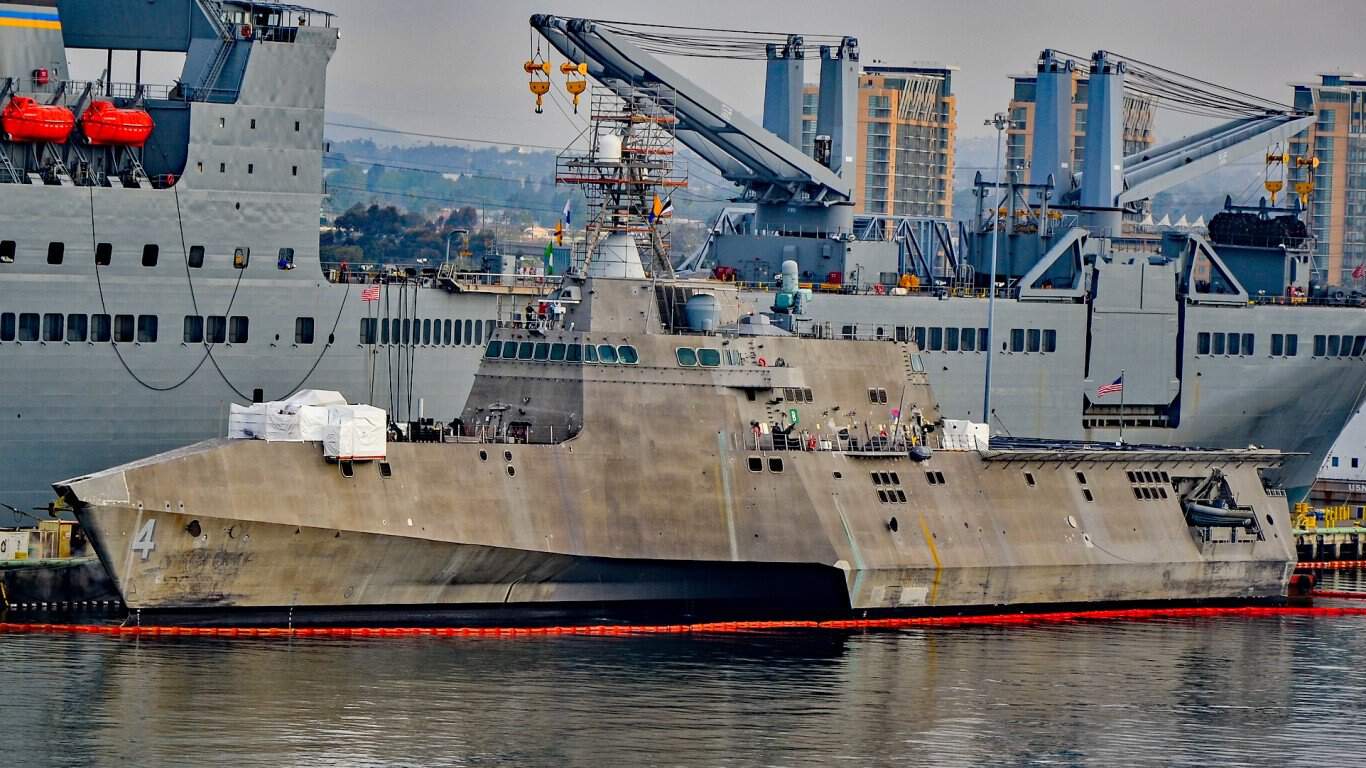
- Number of boats: 12
The Independence-class is the other series of littoral combat ships in the U.S. Navy besides the Freedom class. These are equipped with seaborne stealth technology and protected communications. This class, in particular, has deep-sea capabilities outside its traditional littoral roles. The Independence-class sports an AGM-175 Griffin air-to-surface kinetic missile launcher, a RIM-116 SeaRAM Close-in Weapon System, and a series of heavy machine guns.
5. Ohio-class submarine
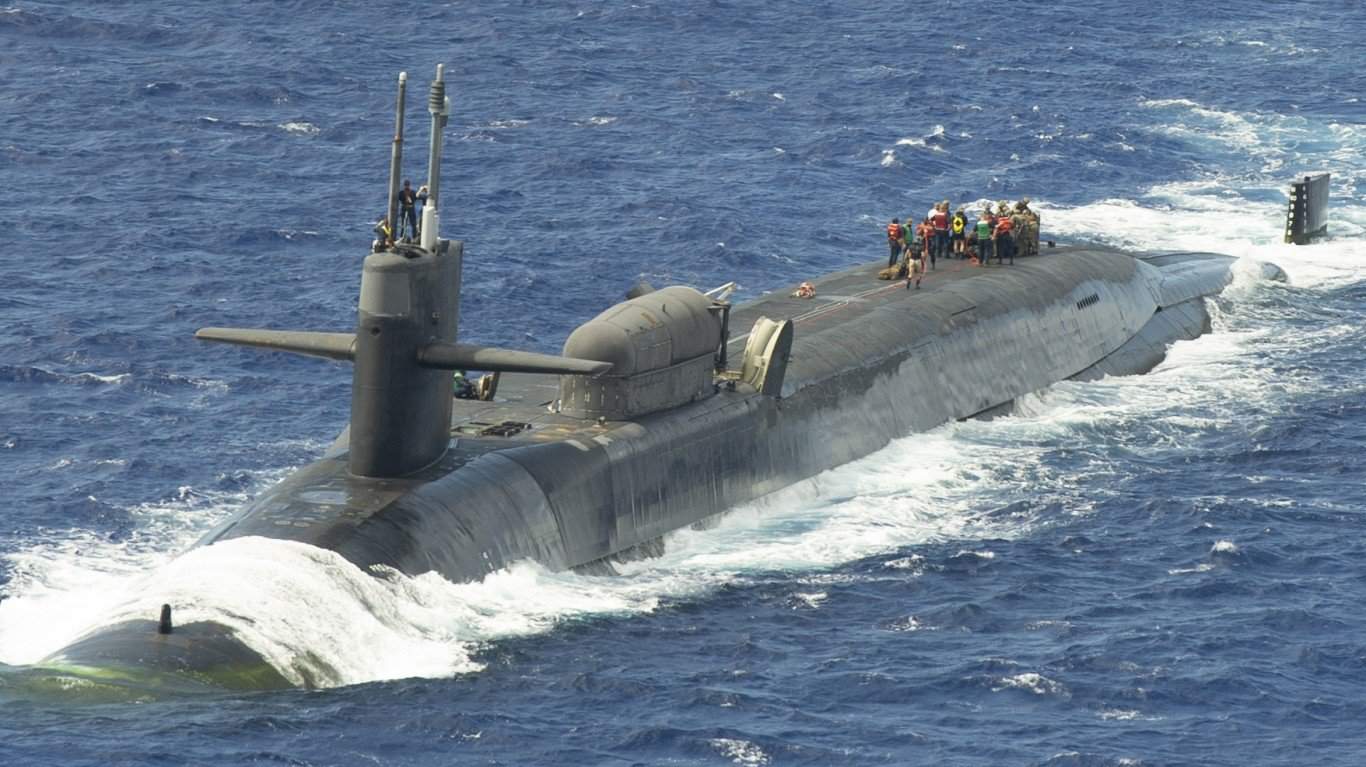
- Number of boats: 18
Ohio-class submarines are a key part of the United States nuclear-deterrent triad. Each carries at least 10 Trident ballistic missiles containing a heavy nuclear payload. These submarines have a crew of around 150 and are just over 550 feet long. With a nuclear reactor powering the submarine, the range of this class is practically limitless, and the only reason to come to port is to resupply. Otherwise, the Ohio class could stay out at sea indefinitely.
4. Virginia-class submarine
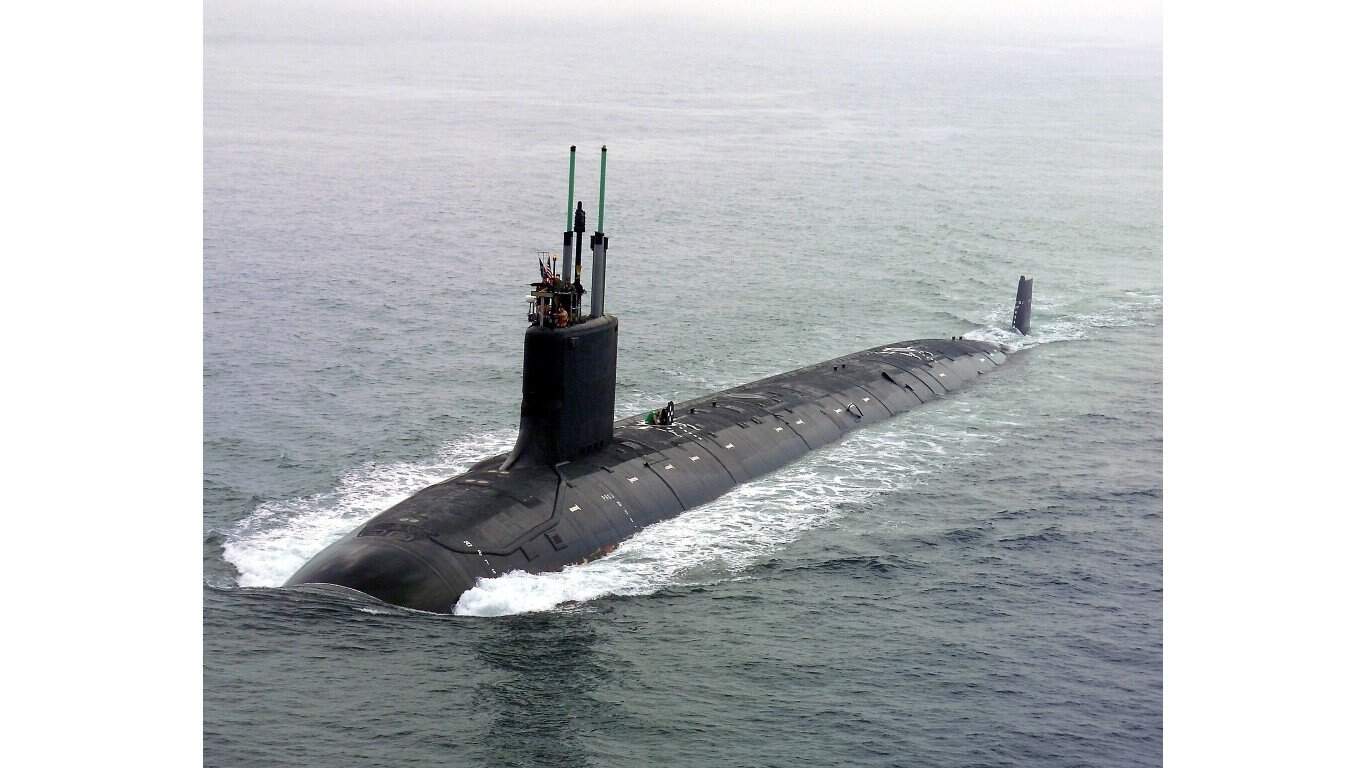
- Number of boats: 19
The Virginia-class attack submarine entered service in 2004. This class sports a series of Tomahawk cruise missiles, and Mk-48 torpedoes as its primary armament. The USS Virginia, the lead submarine of its class, played important roles in the Iraq and Afghanistan conflicts. The submarine measures just under 400 feet and is crewed by over 130 naval personnel.
3. Ticonderoga-class cruiser
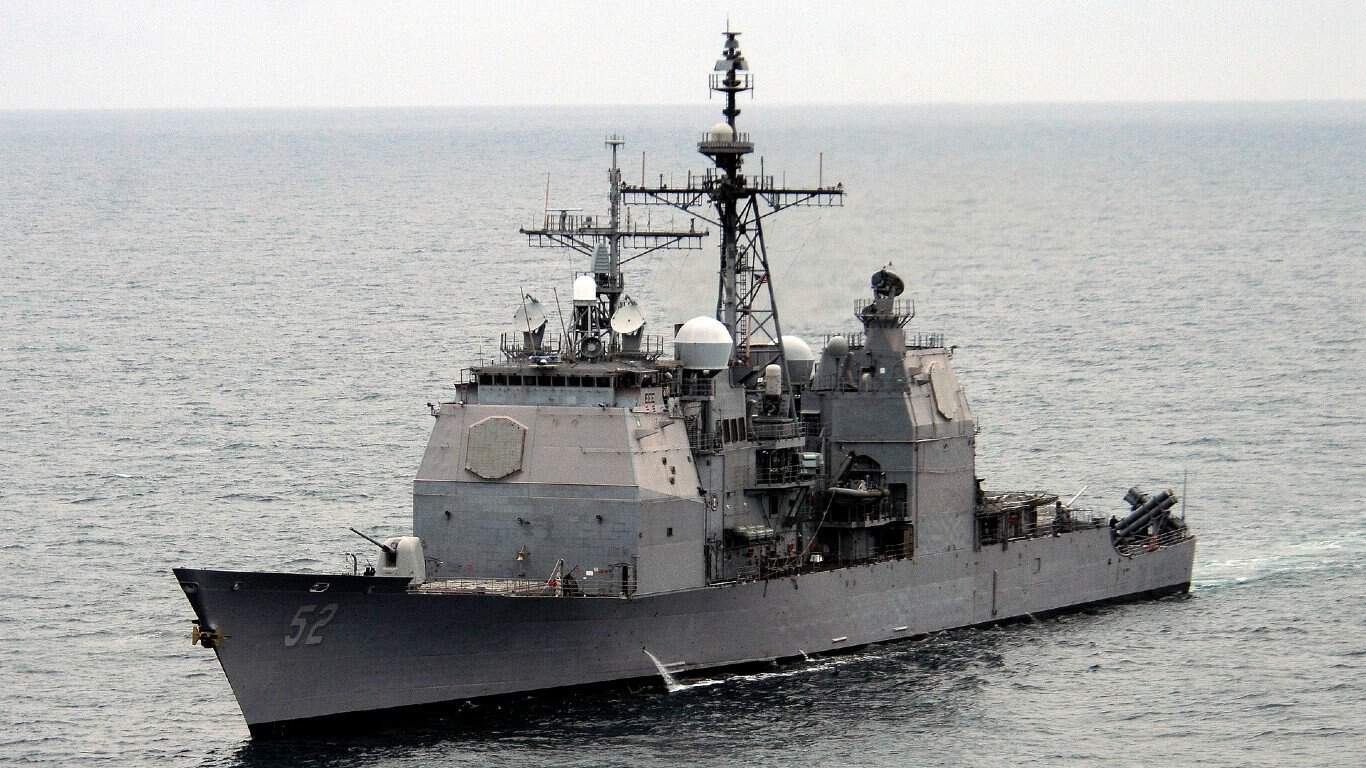
- Number of boats: 22
The U.S. Navy has diminished the cruiser’s role recently, with the last-standing class being the Ticonderoga. This class of warship is best known for being one of the first outfitted with the AEGIS missile system, which acts as a defense system for short-to-intermediate-range ballistic missiles. These ships only entered the fleet in the early 1980s, but there may not be much more time left for them as the U.S. Navy is moving in a different direction.
2. Los Angeles-class submarine
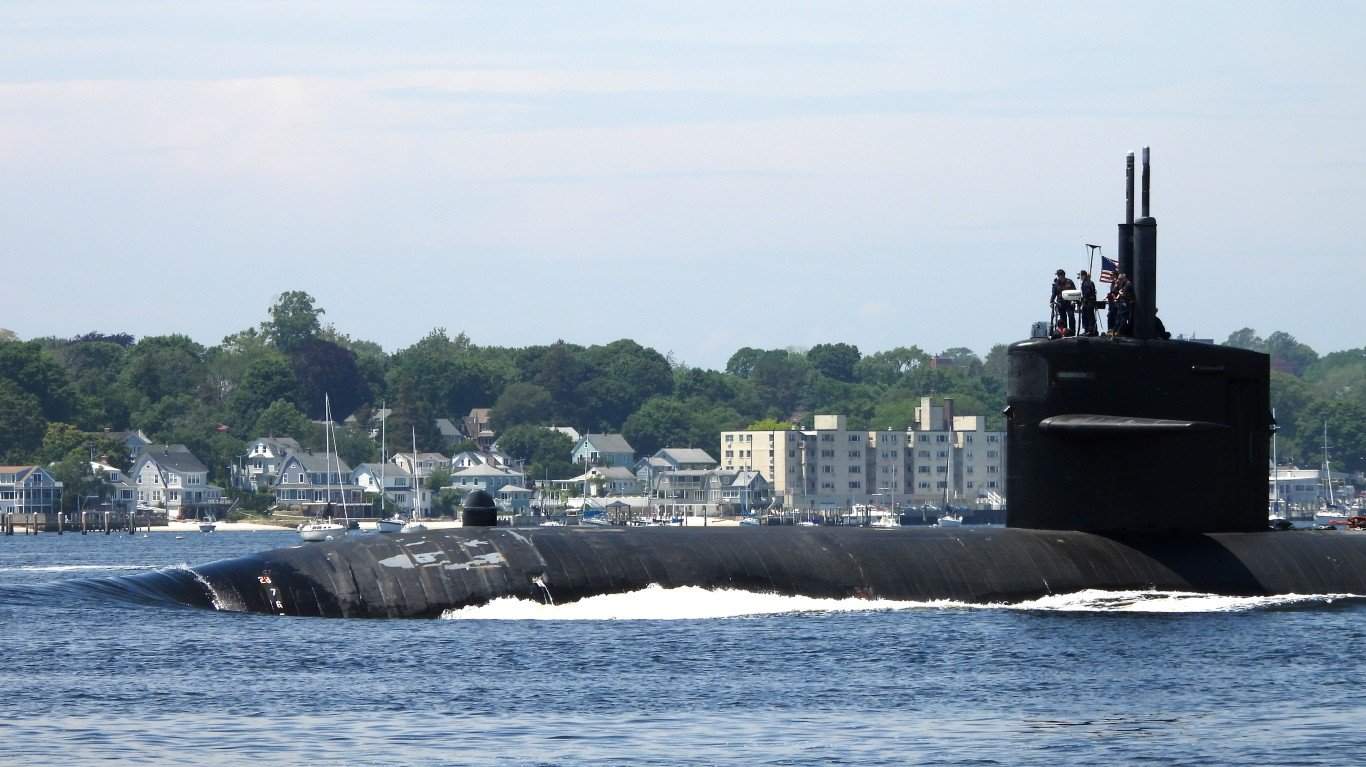
- Number of boats: 28
The Los Angeles-class submarine is the biggest submarine class in the United States Navy. Originally entering service in the 1970s, these submarines were meant to counter Russian threats during the Cold War.
This class was meant to be phased out by the SeaWolf class in the 1990s, but this never came to fruition, and most of the Los Angeles-class submarines are still in service today.
1. Arleigh Burke-class guided missile destroyer
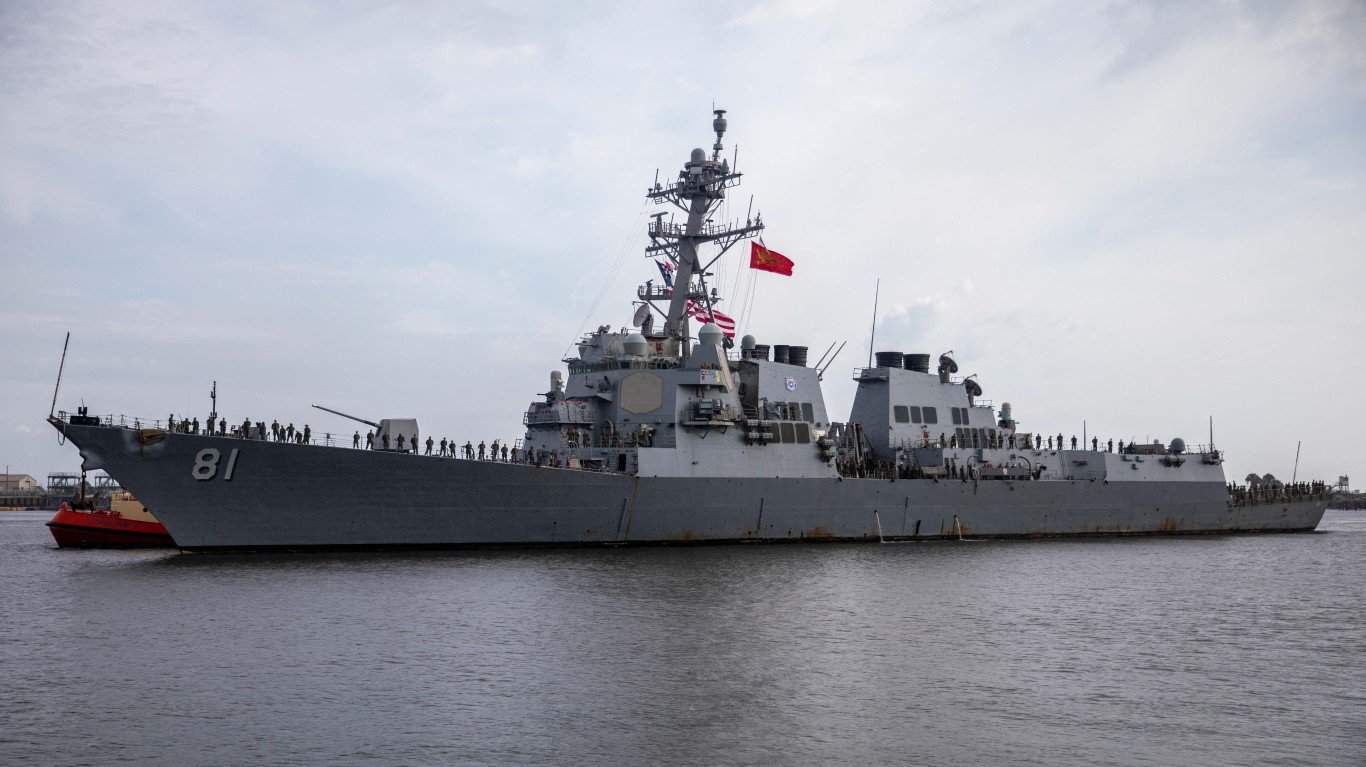
- Number of boats: 68
The Arleigh Burke-class is by far the most numerous vessel in the modern U.S. Navy. These guided missile destroyers are designed for multiple roles, including aerial, land, and undersea combat. They can operate independently or as part of a larger task force or strike group. The Arleigh Burke-class is outfitted with vertical-launch Tomahawk cruise missiles, torpedoes, and anti-air heavy machine guns.
The image featured at the top of this post is ©Michael Idziorek/Shutterstock.com.
